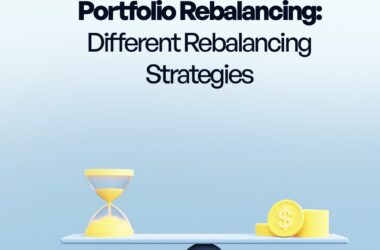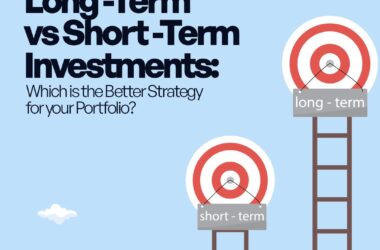To effectively manage your investments as an investor, you need to ensure you have a portfolio. However, it’s not just about building a portfolio but building a diversified portfolio to help mitigate economic uncertainty and risk.
Just like the saying goes “Don’t put all your eggs in one basket”.

If you have ever been to a poultry farm, you will find out that farmers would usually harvest eggs from their hens in separate baskets.
This is so that, if anything happens to one basket—perhaps they accidentally dropped—not all the eggs will be lost. This phrase was coined by the author of “Don Quixote”, Miguel de Cervantes in the early 1600s and has become a valuable wisdom for Investors till now.
Therefore, when it comes to investment and financial assets, diversification can simply be explained as the act of not putting your eggs in one basket. In this blog post, we will show you the easy steps on how you can build a diversified portfolio to enjoy long-term success in your investment.
What is a Diversification?
This is the act of spreading your investment across several asset classes. It helps to incur higher returns and most importantly reduce risk on your investment. In other words, rather than investing all your assets in one likely profitable company, you can invest in different types of assets.
In this case, if there’s a bearish performance in any stock, it would be covered by the good performance of another asset. So, a win-win for you. The concept of building a diversified portfolio is a crucial aspect of managing your investment, especially in the stock market.
Method of Building a Diversified Portfolio
1. Diversification by Sectors and Industries
To diversify in sectors or industries involves buying stocks in different industries. According to the Global Industry Classification Standard (GICS), there are 11 categories of stocks based on their industry and sector you can choose from.
In this method of diversification, you can invest in many sectors of your choice at the same time. For example, you can buy stocks in the Energy sector, Information Tech, Health sector, entertainment, etc. This will help you spread your investment and reduce risk.
However, if you choose to invest in the health sector alone and there is an issue due to inflation it will affect your investment because all those companies’ shares could decline at the same time and this is not so good for your investment.
2. Diversification by Asset Classes
This involves spreading investments across different asset classes like stocks, bonds, real estate, and other investment assets.
For this strategy, you can determine what percentage you want to allocate for each asset since each asset has a unique set of opportunities. The goal is to reduce risk by not being too heavily invested in a single asset type.
4. Geographical Diversification
This involves investing in assets across different geographic locations. For example, if the investment assets in the US are declining maybe due to the economy, China may be blooming and thus, their investment assets will incur high returns and reduce risk compared to the US.
In that case, diversification by location will mean investing in US stocks, Chinese stocks, and other types of publicly traded companies in other locations.
5. Diversification by Time
Investing at different times and intervals can help reduce the impact of market volatility. Also, investing regularly in bits over time can reduce the risk of investing a lump sum at a less-than-optimal time.
This method is called dollar-cost averaging which refers to investing a fixed amount of money into a specific investment at regular intervals. So instead of investing $1000 altogether, investing in bits of $10/$20 weekly will help you manage the risks better.
How to Build a Diversified Portfolio for Long Term Success
Here are some of the major things you need to keep in mind when diversifying your portfolio for long term success:
- Define your Investment Goals: You must know what you intend to achieve with your investment before diversifying your portfolio. Defining these goals will give you a clear picture of which stocks you should invest in, and the percentage to allocate for each asset or sector.
- Spread your Investment: Diversify by your risk tolerance, asset type, time intervals, and sector/industry. just like we stated before, “Don’t put all your eggs in one basket“. This will help you manage risk better and get more returns from your investment.
- Invest in Mutual Funds/ETFs: The fascinating thing about these types of investments is that they come with an in-built diversification because they’re a collection of varieties of stocks, bonds, and other investment assets. Also, they’re less stressful to manage, unlike individual stocks.
- Add to Your Portfolio in Bit Amounts: As explained earlier, using dollar-cost averaging will help you reduce risk. Using this strategy will make you buy fewer shares of an investment when the price is high and buy more when it’s low. For example, let’s say you invest $100 in a particular stock every month. If the stock price is high that month, your $100 will buy fewer shares. If the price is low the following month, your $100 will purchase more shares. Over time, this strategy helps you manage risk and gain more from your investment over time.
Read Also: Best Stock Investment Apps in Nigeria 2024
FAQS
Is Diversifying my Portfolio a Good Strategy?
Yes, diversifying your portfolio is a great strategy for a long-term successful investment. It helps to reduce the overall risk of your business and also generate new sources of revenue.
What are the Disadvantages of Portfolio Diversification?
Portfolio diversification though a great strategy, can be time-consuming and overwhelming for an inexperienced investor and it can also limit your returns on investment for a short-term investment.

Conclusion
Portfolio diversification is a key aspect of investment and its end goal is for you, as an investor, to protect your investment against uncertain market fluctuation by spreading your money across various investments.
To mitigate risk and increase your chances of getting higher returns. You can decide to diversify your portfolio by sectors/industries, asset class, time, etc. Whichever is your choice, you must ensure you do your proper research on which stocks to buy.
Do you want to enjoy a seamless financial journey? Take the first step by visiting the Trove website to get started.








